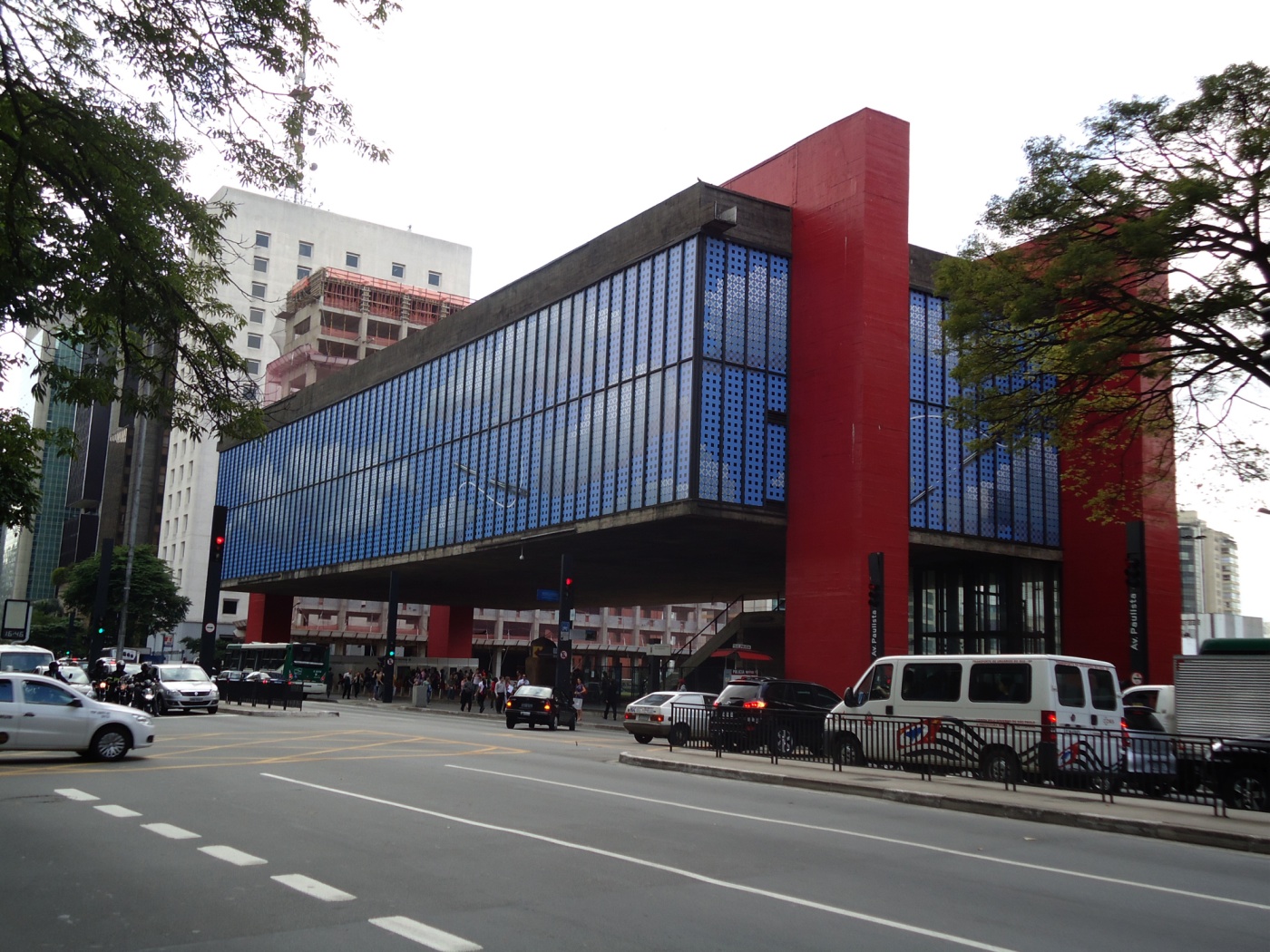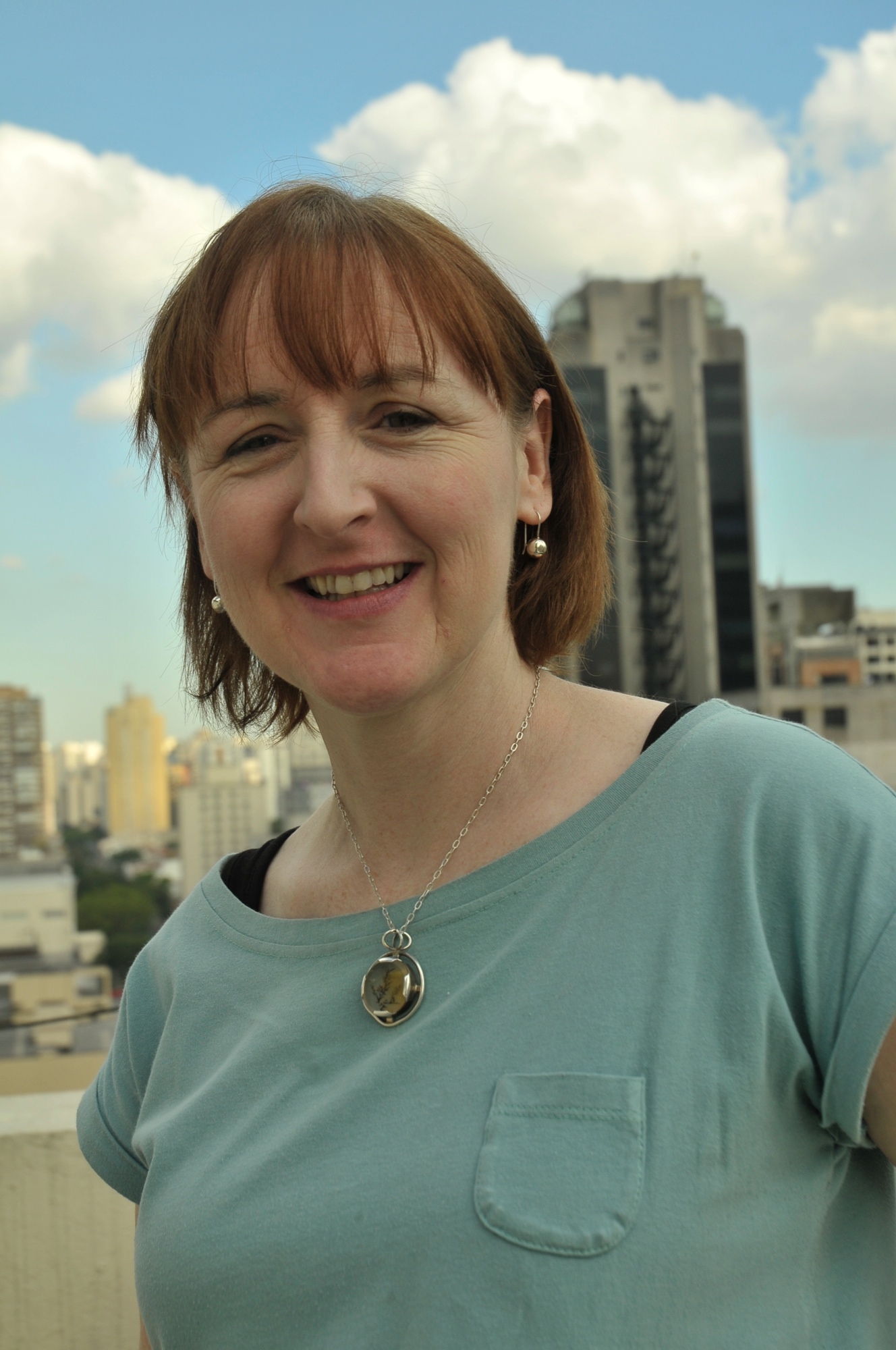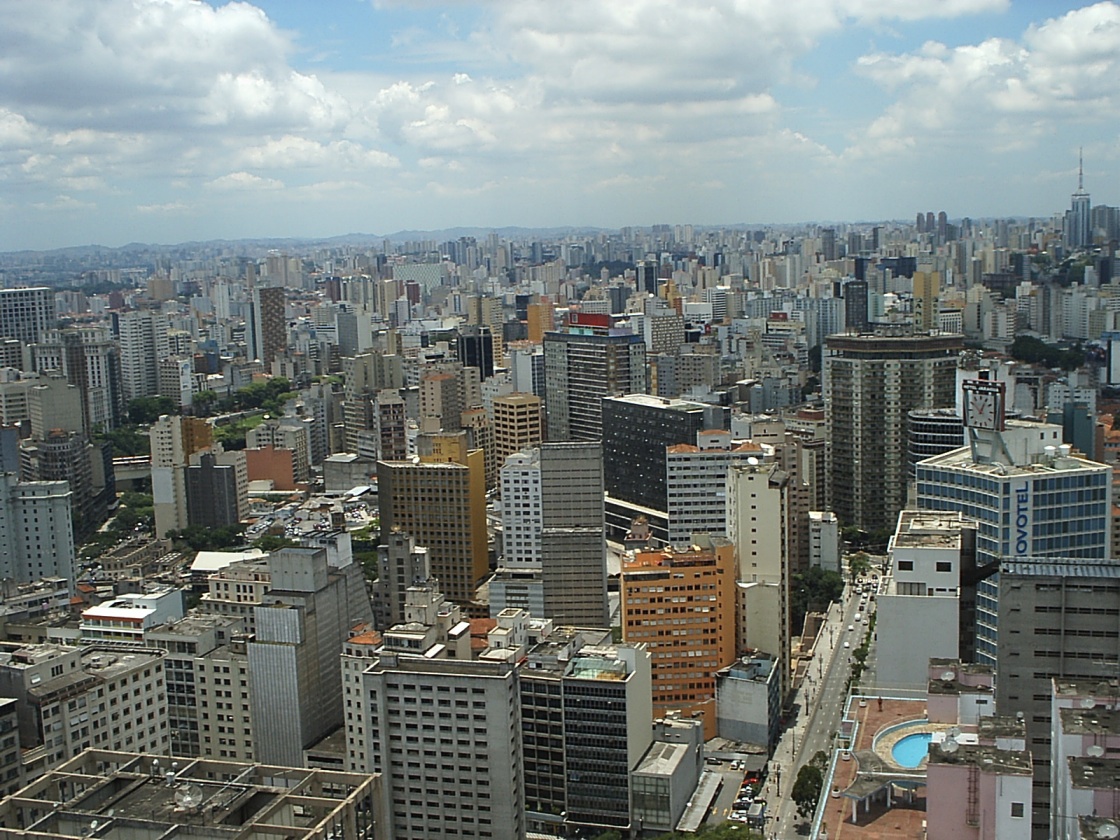Our beloved metropolis is aesthetically powerful, but in the traditional sense, it’s no looker. It’s a shame the architectural treasures we do have are so sparse and so unknown – because they are so very good.
By Claire Rigby
There are plenty of cities that are a thrill to touch down in: the descent into Buenos Aires’s waterfront Aeroparque, for example, with the big baroque city reeling back from the mighty River Plate. But for scale, repetition and sheer persistence, São Paulo, spooling away endlessly to the horizon, is an impressive contender.
SP’s army of buildings, also seen to wonderful effect from the top of Edificio Italia, are an unforgettable sight – and one that tends to strike shock and awe into the newly arrived observer. For every cityphile electrified by the vision of an endless city, there’s someone else who wants to turn tail and flee, spooked by the blunt-topped, grey-and-white concrete legion, crammed together like a slice of Paul Citroen’s 1923 collage ‘Metropolis’, with the same thrilling confusion of buildings and the same dearth of greenery and breathing space.
São Paulo is many things: it’s an exceptionally likeable, sophisticated, self-effacing city. It’s a buzzing cultural hub, and it’s peopled by some of the most urbane and interesting people on the continent. But it’s no looker. And that’s even before you compare it to Rio. Seen from a distance, it’s a mess, sprouting all over with identikit low-rise and high-rise constructions in concrete, a material more suited to its sullen brand of tropical climate than shiny steel and glass.
But in between the buildings, there are architectural treasures to be found, and some of them are capable of astonishing with their audacious shapes and volumes. The only mystery is why the city makes so little of them.
Standout architectural icons include Oscar Niemeyer’s behemoth Copan building, and his stunning triangular Auditório Ibirapuera. There’s Ruy Ohtake’s daring, half-moon-shaped Hotel Unique and candy-cane Instituto Tomie Ohtake. There’s Isay Weinfeld’s elegantly sober, restrained Fasano hotel in Jardins, and a whole collection of fine Modernist apartment buildings, with clusters downtown and in the neighbourhood of Higienópolis. The gorgeously vintage Martinelli building in Centro, alongside the Gothamesque Banespa – and Centro’s lovely anomaly: the curlicued, turn-of-the-century Theatro Municipal.

But beating them all as the obvious pinup face of São Paulo is the MASP Museum of Art – the crimson-and-grey masterpiece of the Italian architect Lina Bo Bardi, who made her home in Brazil in 1946. Crouched on a huge plot of land at the heart of Avenida Paulista, the museum is an immense oblong block suspended beneath a pair of dazzlingly red supports, providing a large space beneath – the 70m2 vão-livre – that’s a de facto focal point for the city’s gatherings. Marches rally under it, protests break out beside it, the Sunday antique market is perfectly located there, and kids huddle, smoking joints with impunity on its balustrades, which are reachable only by crossing a huge open space. It’s even flanked by an exuberant burst of rainforest, just across the road – Parque Trianon, one of the city’s most beautiful parks.
The MASP should be the face of São Paulo, beamed around the world at every opportunity, forcing readers and viewers to do the double-take it invariably inspires, and take another, closer look at São Paulo. And yet you struggle to find it, much of the time, looking out from tourist information, or from official letterheads and logos.
On a trip to the UK this week, I took the opportunity to conduct a completely unscientific survey of foreigners’ visions of the city. What do you see when you think of São Paulo?, I asked a jerkily selected set of respondees. They ummed and ahhed before fumbling it completely, every one of them, tossing back ‘Carnival’, shanty-towns, skyscrapers and the beach. Wrong, more or less, on every count. There’s a decent Carnival in São Paulo, but I think they were thinking of Rio. There are no beaches for miles: I think they were thinking of Rio. Favelas, yes – immense ones; but not readily visible to most visitors, unlike Rio, where they are impossible to miss. ‘Skyscrapers’ is getting warmer, though in fact, São Paulo has fewer than you’d think: most SP buildings are lower than the 35 storeys that qualify a skyscraper, thanks to city regulations apparently related to its three airports.
People need to be able to visualise a city in their mind’s eye to fully register its presence. They need iconic, instantly recognisable architecture. But to the outside world, São Paulo remains nebulous, mysterious, undescribable – a generic city.

I took a detour last Sunday, on the same UK trip, to walk across London Bridge for a look at the Shard, now fully grown, if still coddled by cranes, and piercing the sky with its splinters of glass. Soaring over low-rise London, and sharing a horizon with the Gherkin, over the river, and soon a whole series of new look-at-me skyscrapers, it’s not everyone’s cup of tea. But it’s a powerful mark of a living, creative city, and for the most part, Londoners have taken it to their hearts. It’s a mystery why São Paulo architects don’t make more of the chance to flaunt their creativity in the many new buildings constantly being erected here. But search as you might for dazzling shapes and surfaces, they’re few and far between.
If the city isn’t careful, its public, most famous face could become the gigantic Solomon’s Temple building, rising now in the neighbourhood of Belem. You can watch the construction live online, and by the looks of things, it’s progressing very fast indeed.
All the more reason for paulistanos to act fast to get a worthy, exciting image into the world’s mind’s eye. My vote goes to the MASP, or failing that, for the striking radio and TV antennae that march along the ridge of Avenida Paulista, electrifying to see as you speed through the city by night, all lit up and screaming, in a way no massive evangelical faux-historic temple ever could: ‘Metropolis!’
All Photos ⓒClaire Rigby
Still curious about what São Paulo looks like – and feels like? Try this great film by Julian Moura-Busquets, on Vimeo: ‘The Biggest City in Brazil. What Comes to Mind?’
[vimeo 33825865]
 Claire Rigby is the editor of Time Out São Paulo, in English. She was previously the editor of Time Out Buenos Aires, and has worked as a freelance journalist for titles including the Guardian and the Telegraph.
Claire Rigby is the editor of Time Out São Paulo, in English. She was previously the editor of Time Out Buenos Aires, and has worked as a freelance journalist for titles including the Guardian and the Telegraph.
She writes for From Brazil every other week.
Follow @claire_rigby
Time Out São Paulo


